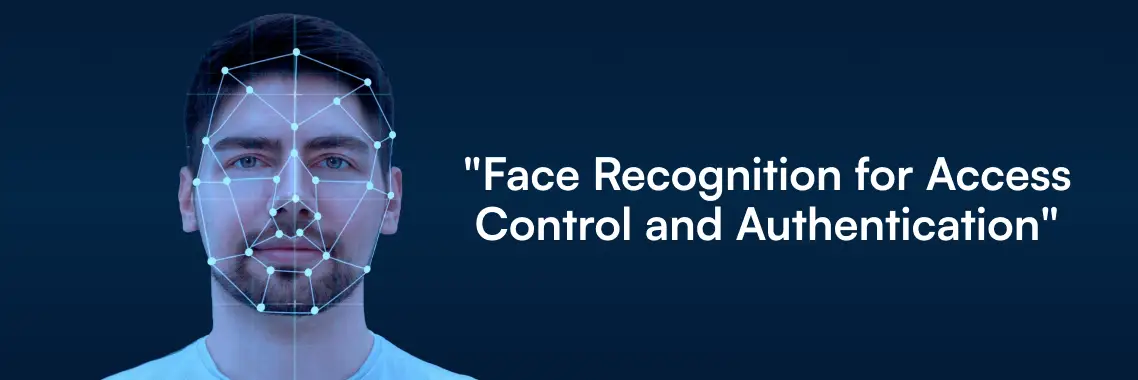Have you ever thought about what it’ll be like having an assistant in the airport - who no longer asks you to wait half an hour or more in the queues of security lanes?
Instead, it processes monitoring drop-off activities and strengthening security from terminal entrances to the runway in real-time, all while making airport operations more flexible.
Well, human assistants made it possible, and that’s true; but frankly, when it comes to handling operations at peak seasons or spotting mischievous visitors with forged identities, humans often fail to catch them right away.
Rather, a digital securing assistant, built on facial recognition technology, can set unique standpoints with numerous possibilities.
Using facial recognition technology in airports is a transformative approach in itself, and how it is driving purposeful actions, you'll get to know through real-life use cases and benefits overviews.
Let’s first take a look at airports worldwide, leveraging benefits by using face recognition
1. Paris-Orly airport, France
Previously, the airport authority used to take fingerprints as biometric verification which was used by only 4% users and that too with more confusion about which hand should be used. But later on considering this situation, in 2017, the airport authority introduced facial recognition technology and experienced a reduction between 30% to 40% in the timing of passenger onboarding.
2. Indira Gandhi International airport, Delhi
To make the airport service “contactless and seamless”, the Airport Authority of India introduced face recognition first in IG airport. To use it, passengers first need to scan a QR code on the boarding pass in India’s Digi-Yatri app and create travel credentials there with their Aadhar card and images. Once it is done, at the airport, passengers just need to scan their boarding pass and the face-recognition based live cameras will authenticate them at the e-gate of the terminals.
3. Changi airport, Singapore
The airport has streamlined the immigration process with the application of facial recognition like never before. After its utilization, the airport authorities made it possible to enable passengers to pass through security checks as low as 10 seconds from the previous 25 seconds. Also, they made the whole process to enable passport-free clearance while providing this special treatment to Singapore’s permanent residents and long-term pass holders.
4. Heathrow airport, London
With around 80 million passengers flowing through the gate of Heathrow airport, the integrated biometric support system through face recognition makes the security standard high. The airport authority uses this technology for various things, likely check-in, bag drops, security lanes, and boarding gates while successfully speeding up boarding times by 30%.
5. Hartsfield-Jackson airport, Atlanta
To cater to the fastest onboarding in one of the world’s busiest airports, Hartsfield-Jackson, where more than 260,000 passengers pass through on a daily basis, the airport authority introduced facial recognition technology. Initially, they mandated it be optional to verify passengers’ passport information at the check-in process in a particular terminal, but later on, they started using it widely. By using this advanced tech they took down the timing of passengers' custom checking by about 4 minutes and using the data they successfully saved around 9 minutes for each passenger.
The features & benefits that layered the importance of using face recognition in airports
The use of facial recognition in airports has become commonplace due to passenger security screening. This is just one of the ideas to bring this technological importance into the limelight, though there’re more significant advantages that include by followings:
One-to-one tireless verification
This is a typical check-in process in every airport in the globe, where you enter with travel documents like passport, visa, and boarding pass, and stand in the queue to stick your IDs to a machine. You stare at the camera without blinking your eyes, the face recognition system provides you the green check by comparing and verifying your ID against faces that are stored in a digital storage. Though this system can judge you if your ID is forged with masking or aging discrepancies, human assistants are still there to take the final call as of now.
Touchless access control
Not only to verify passengers but to verify authorized personnel as well, the face recognition system is taken into account. Think of certain sensitive areas beyond security lanes in airports, such as aircraft hangers, cargo shipping areas, air traffic control rooms, and runways. By using face recognition it can be easily identified who has given physical access there. Also, to pass on responsibilities digitally in those areas becomes seamless.
Real-time watchlist alerts
Along with humanized one-to-one verification, when airports’ live cameras are integrated with face recognition, it enables authoritative security teams to respond to potential threats before blunder. The system potentially catches scammers, thieves, or airport staff who’re wrongly fuelling duty-free shadowing. Yes, it’s possible to execute a watchlist alert and take an immediate action before things go out of hand.
Now, let’s know what these features can bring altogether to strengthen the importance of using facial recognition technology in airports:
- Streamline location-based facial recognition attendance for the airport staff and let them free from manual records or report analyzing processes.
- Monitor high-traffic volume 24/7 in the airport while checking every individual from airport staff, contractors, authorized individuals, VIPs and normal passengers to banned individuals, or terrorists.
- Secure doors and entry points with authorization from parking area, air-traffic control tower, custom checking area, runway to airport information desks. And, thus, help protect people from being anxious by intentionally misguided information.
- Streamline video monitoring so that the suspicious people can be detected and catched if violations are flagged. In fact, catching suspects and addressing the issue before violation can also be possible.
- The high volume of shipments, coupled with multiple parties handling various stages of the process, creates opportunities for theft, misplacement, or sabotage. But with face recognition, airports can ensure accountability, preventing unauthorized personnel from handling sensitive or valuable shipments.
- As cyber threats become more sophisticated, airport systems must adopt a zero-trust security model to verify trusted data center personnel with 2FA authentication. In a zero-trust environment, access is denied by default and only granted after verification.
Utilizing face recognition in airports is all about amplifying passengers’ experience!
Gone are the days when authentication, security, and operational maintenance with flexibility depended on human staff only. Today it’s when advanced tech like face recognition technology revolutionizes how modern airport operations should set high-quality possibilities in the least amount of time.
This isn’t an expectation from passengers worldwide, it’s expected by the employees as well who must execute smarter work to control vulnerabilities. So, yes, face recognition is on help to provide what you want.
And, if you’re someone from the airport authority who wants to track and monitor your airport staff attendance flawlessly, tap on our Lystface facial recognition attendance system.
Or else, if you’re someone who wants to set accurate verification and pass green checks to your airport visitors, try out our Lystface API that can be integrated with your existing software.
With face recognition, possibilities are numerous, decide what you want to take and why!



